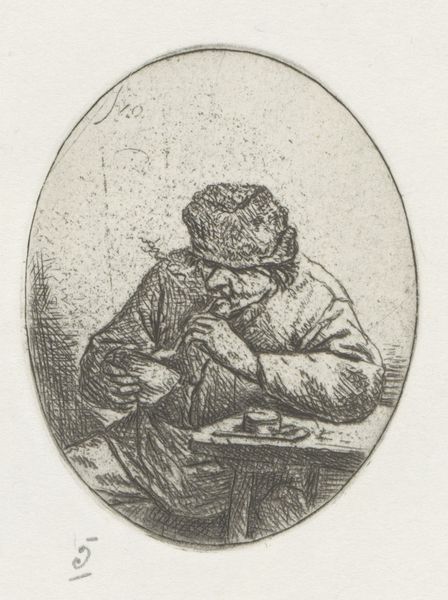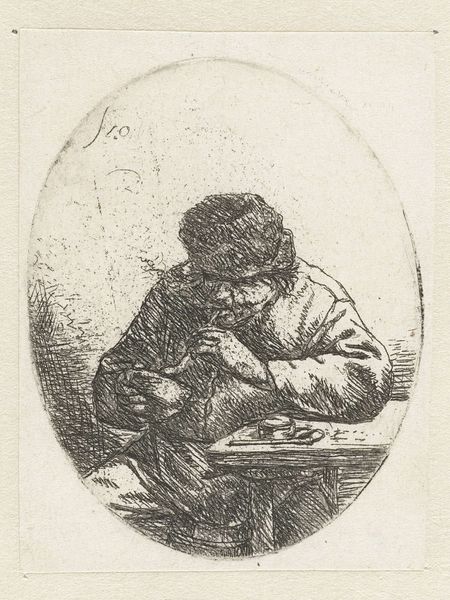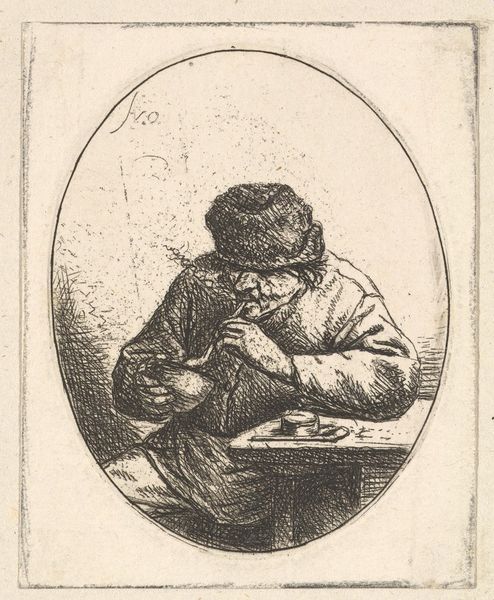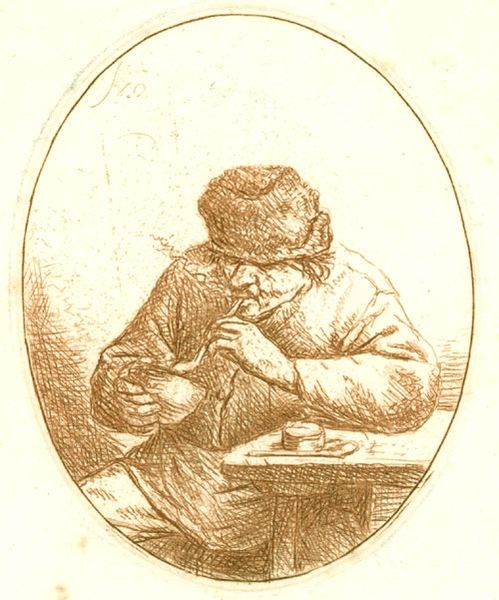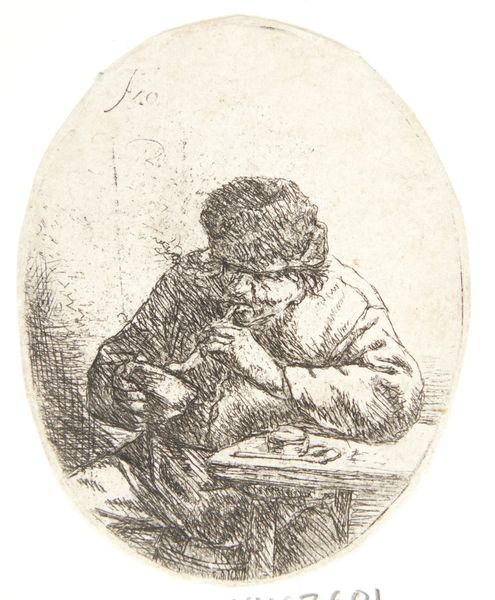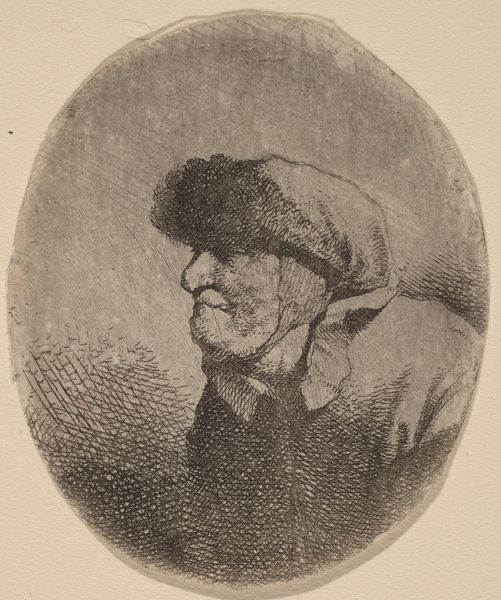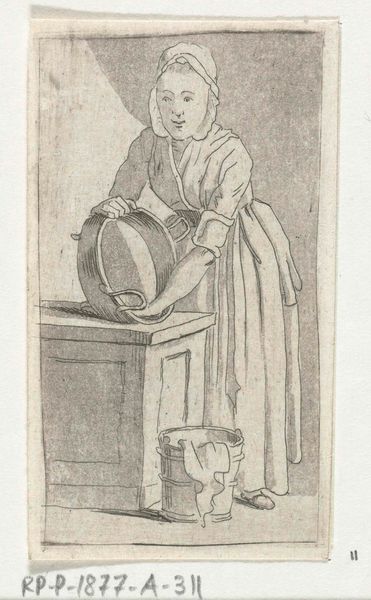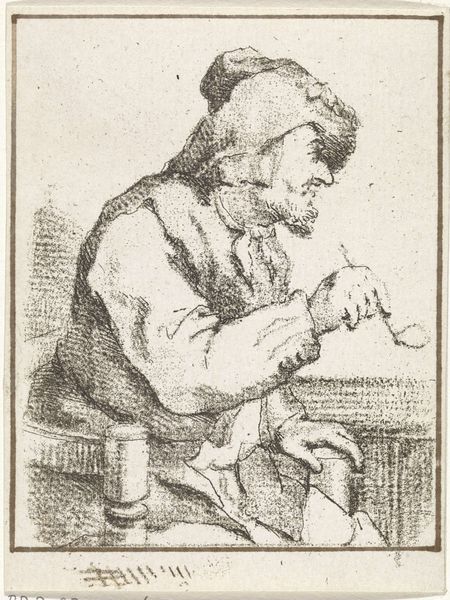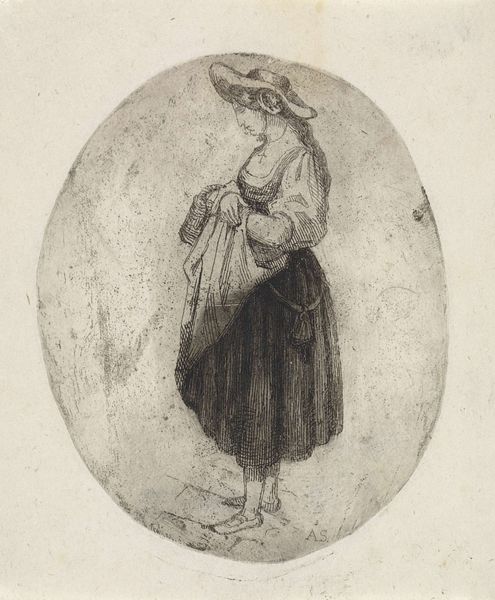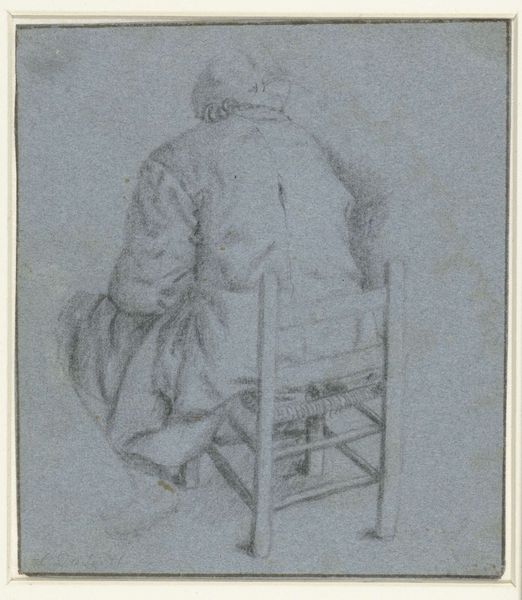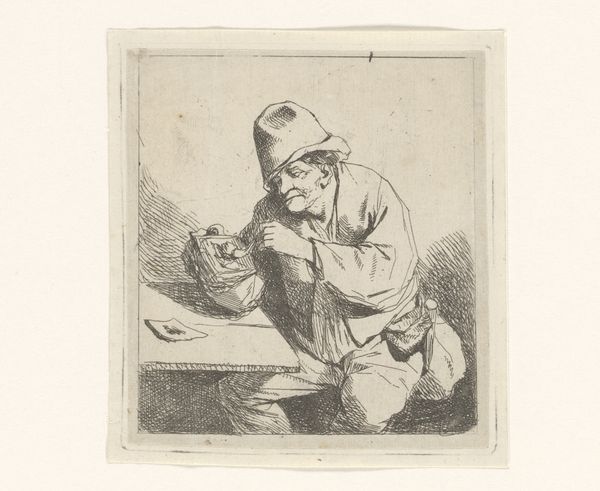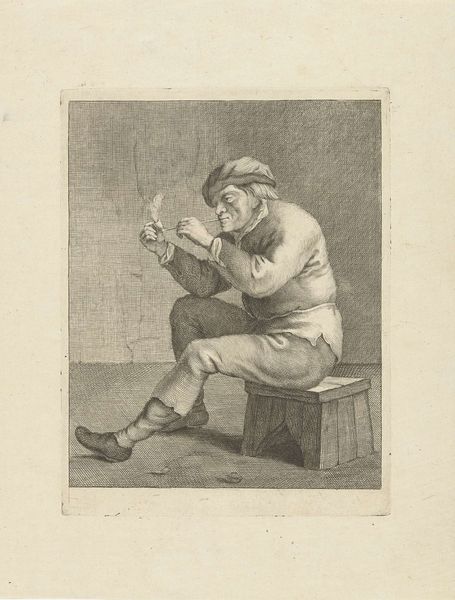
drawing, print, etching
#
portrait
#
drawing
#
dutch-golden-age
# print
#
etching
#
old engraving style
#
pencil drawing
#
genre-painting
Dimensions: height 32 mm, width 31 mm, height 351 mm, width 262 mm
Copyright: Rijks Museum: Open Domain
Curator: Adriaen van Ostade created this work, "Buste van een lachende boerin," sometime between 1650 and 1900. It’s an etching, currently residing here at the Rijksmuseum. Editor: Immediately, I'm struck by the intimate portrayal of everyday life, the sitter in what appears to be deep thought with a pipe between her fingers. There's a sort of melancholic beauty to the image, despite being subtitled as showing the subject 'laughing', an observation that raises some interesting considerations regarding representation, gender and societal roles in this period of art production. Curator: It’s worth remembering the context in which van Ostade was working. He's known for his genre paintings, which often depicted scenes of peasant life. The rise of the middle class at the time allowed people to spend on art like this to signal taste. Editor: So, this woman is not merely a subject but is performing, within a complex visual and economic field of play that would eventually render 'realism' such a vexing and historically charged term. Is van Ostade presenting a straightforward portrait, or is he subtly critiquing social hierarchies? Does she represent the hardships endured by women of the working class during this era? I’m keen to dig deeper. Curator: It’s interesting you ask. How does this portrayal impact or potentially subvert common depictions of peasant women at the time? Are there other readings to consider regarding issues of class or the artist’s intention when producing these kinds of images for wealthier patrons? Editor: Considering gender and class dynamics during this period is crucial for my reading of the print. If this 'laughing' woman doesn't really seem to laugh, maybe it’s a subtle hint from van Ostade about the lives and representations of rural working-class people being consumed by a rising urban, moneyed, elite. What would the etching meant at the time and how did social forces influence van Ostade’s artistic output? Curator: Viewing the work through these lenses gives a richer understanding. Ultimately, reflecting on Ostade's creative decisions within the social landscape prompts an inquiry into what the Dutch Golden Age meant, and for whom it delivered golden dividends. Editor: Indeed. Engaging with art history critically can give the visitor more nuanced insights on art production and open up an experience which makes our visit here that much more rewarding.
Comments
No comments
Be the first to comment and join the conversation on the ultimate creative platform.
